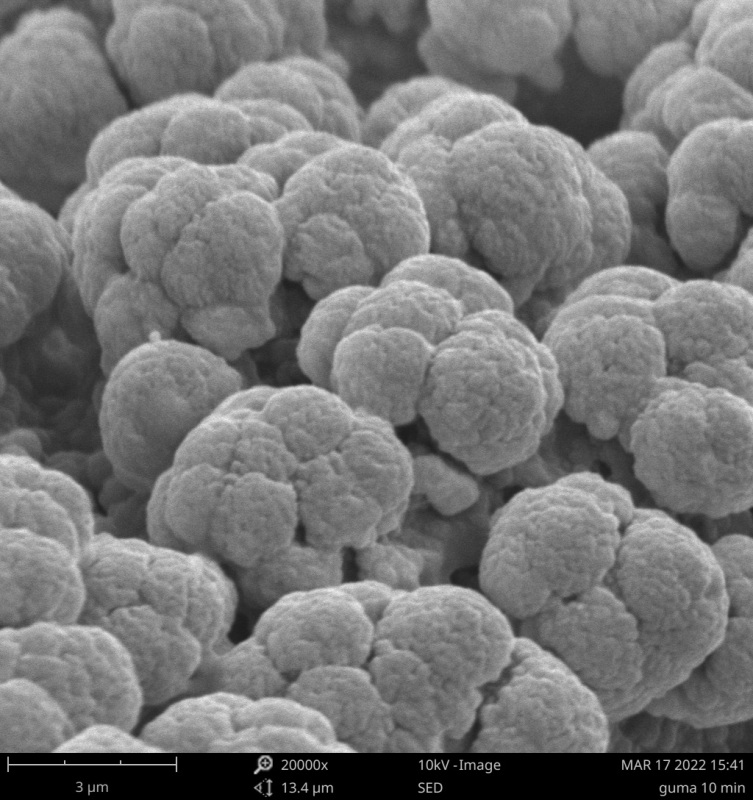LifeInDust
Life by a highway – effects of herbivorous invertebrates exposure to tire dust

Examining whether the population of herbivorous invertebrates changes depending on the distance from the traffic lane. We will also examine what other types of pollution can be observed alongside tire dust, and if the particles, both additionally contaminated and these with other types of pollutants, eaten by the examined invertebrates cause changes in their biological processes.
key words: physio-chemistry of dust, model species, soil, leaves, insects
It is estimated that an average car emits 5.8 mg of tire dust per 1 kilometre daily. With an average of 50,000 cars driving along Polish A4 motorway every day, this results in 290 g of dust/km. This amount creates environmental pressure in the form of pollution reaching various organisms living along this express-way. Dust gets into the soil or groundwater; it also remains on plants. Thus, it is either inhaled or consumed by these organisms. Furthermore, the indirect effect of dust involves its ability to absorb or adsorb other types of pollutants, such as metals from brake pad abrasion.
The goal of the project is an analysis of the results of such emissions on soil and aquatic ecosystems. The interactions of micro-particles from tire abrasion with other types of pollutants are also not well studied. The members of the project team will carry it out on two complementary levels: in field studies, taking samples of soil, plants and invertebrates, and during laboratory tests, in which they will analyse the effects of exposure of model organisms to different types of dust under controlled conditions.
The research will be conducted in two locations: an urban, forest-free area at the intersection of DK86 with ul. Wiejska (Czeladź) and ul. Józefa Piłsudskiego (Będzin), near a shopping centre (50.314018, 19.108945) and in a forested area along the same route at the intersection with ul. Katowicka in Tychy (50.165433, 19.015917).
PROJECT LEADER
AGNIESZKA BABCZYŃSKA, PhD, Associate Professor

Photo by Małgorzata Dymowska
Agnieszka Babczyńska, PhD, Associate Professor
Institute of Biology, Biotechnology and Environmental Protection
Faculty of Natural Sciences
e-mail: agnieszka.babczynska@us.edu.pl
phone number: +48 32 359 12 35
- Monika Tarnawska, PhD, the University of Silesia in Katowice
- Jolanta Brożek, PhD DSc, Assoc. Prof., the University of Silesia in Katowice
- Prof. Maria Augustyniak, the University of Silesia in Katowice
- Bartosz Łozowski, PhD the University of Silesia in Katowice
- Marta Sawadro, PhD, the University of Silesia in Katowice
- Agnieszka Czerwonka, MSc, the University of Silesia in Katowice
- Magdalena Kowalewska-Groszkowska, PhD, the Museum and Institute of Zoology, Polish Academy of Science in Warsaw
- Jūratė Žaltauskaitė, PhD, Vytautas Magnus University, Kaunas, Lithuania
- Gintarė Sujetovienė, PhD, Vytautas Magnus University, Kaunas, Lithuania
- Prof. Monia Renzi, University of Trieste, Italy
- Prof. Piero G. Giulianini University of Trieste, Italy
- Anita Giglio, PhD, the University of Calabria, Italy
- Jean-Luc Jaffrezo, PhD, the University of Grenoble Alpes, Grenoble, France
- Gaëlle Uzu, PhD, University of Grenoble Alpes, Grenoble, France
More about the project

Tire dust particles obtained in the laboratory, observed in the Phenom XL scanning microscope
Photo by Jolanta Brożek
popular science article
The motorway from the perspective of a mealworm, an earthworm and a daphnia
University of Silesia Magazine No. 7 (297)/2022
The whole world gladly uses motorways. They make travelling much easier, they reduce fuel consumption, they are safer. But how this kind of infrastructure affects the life quality of animals? – It is a world turned upside down, one they have to learn once again – says Agnieszka Babczyńska, PhD, Assoc. Prof., a laureate of the contest “Green Horizon”. The biologist together with an international team is studying the effects of tire dust on herbivorous invertebrates.
News
19.04.2022
We quantified dust at the study locations in terms of area and leaf dry weight. This will allow us to replicate field conditions in the laboratory. In addition, collected soil and leaf samples were sent to partners in Lithuania, where they will be used as food and/or habitat for model species: earthworms and daphnia under laboratory conditions, and in France, where they will be analysed for those properties of dust that may account for their pro-oxidative (one of the causes of toxicity) nature. In the University of Silesia laboratories, we obtain reference dust from worn tires, without additions of other pollutants associated with road traffic. Soon, we will expose it to the model insects: specimens of the whitefly.
RESEARCH EXCELLENCE INTIATIVE
presents
Meet the laureates of the Research Excellence Initiative calls for proposals “Green Horizon” and “Post-COVID Horizon”.
The research project: Life by a highway – effects of herbivorous invertebrates exposure to tire dust
Grant amount: PLN 120,000
PROJECT LEADER

Photo by Małgorzata Dymowska
Agnieszka Babczyńska, PhD, Associate Professor
Institute of Biology, Biotechnology and Environmental Protection
Faculty of Natural Sciences
e-mail: agnieszka.babczynska@us.edu.pl
tel.: +48 32 359 12 35
- Monika Tarnawska, PhD, the University of Silesia in Katowice
- Jolanta Brożek, PhD DSc, Assoc. Prof., the University of Silesia in Katowice
- Prof. Maria Augustyniak, the University of Silesia in Katowice
- Bartosz Łozowski, PhD the University of Silesia in Katowice
- Marta Sawadro, PhD, the University of Silesia in Katowice
- Agnieszka Czerwonka, MSc, the University of Silesia in Katowice
- Magdalena Kowalewska-Groszkowska, PhD, the Museum and Institute of Zoology, Polish Academy of Science in Warsaw
- Jūratė Žaltauskaitė, PhD, Vytautas Magnus University, Kaunas, Lithuania
- Gintarė Sujetovienė, PhD, Vytautas Magnus University, Kaunas, Lithuania
- Prof. Monia Renzi, University of Trieste, Italy
- Prof. Piero G. Giulianini University of Trieste, Italy
- Anita Giglio, PhD, the University of Calabria, Italy
- Jean-Luc Jaffrezo, PhD, the University of Grenoble Alpes, Grenoble, France
- Gaëlle Uzu, PhD, University of Grenoble Alpes, Grenoble, France





